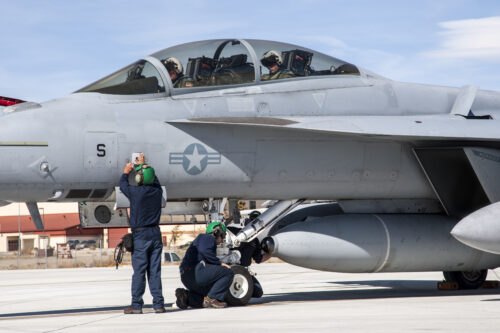The Pentagon’s Director of Operational Test and Evaluation (DOT&E) has raised concerns with the operational testing schedule of the U.S. Navy’s F/A-18 Infrared Search and Track (IRST) Block II program.

Photo: Lockheed Martin
Originally planned for 1QFY21, the testing has been pushed back to at least 2QFY23 due to hardware and software issues. The proposed schedule now allows minimal time for problem discovery and deficiency resolution prior to the planned start of Initial Operational Test and Evaluation (IOT&E), the DOT&E has said.
The Navy has planned to carry out Initial Operational Test and Evaluation (IOT&E) of the system between January and May 2023. However, they have not yet submitted the IOT&E plan to the Director of Operational Test and Evaluation (DOT&E) for approval.
The IRST Block II program is facing several challenges in its development and testing phase. The system still has open deficiencies from previous versions, as well as those discovered during the Block II developmental testing with prototype systems, which need to be resolved in order for the system to be operationally effective. This indicates that the system is not yet ready for operational use and requires further testing and development to address these issues.
Furthermore, for the IRST to be an effective contributor to aircraft fire control solutions, the Navy needs to improve the Super Hornet’s operating software and correct existing deficiencies. While the prototype pod has demonstrated tactically relevant detection ranges against operationally relevant targets during initial developmental test events, the Navy is still working on developing the software on the Super Hornet that will enable these detections to be translated into stable system tracks that facilitate weapons employment.
Additionally, the prototype IRST Block II systems currently being used in developmental testing are not meeting the Navy’s requirements for reliability and maintainability, and further work is required to improve the system’s design and performance.
The main goal of the IRST Block II program is to enhance the survivability of the F/A-18E/F aircraft by providing target tracking capabilities in a contested and congested electromagnetic spectrum environment. While the system has the potential to provide this capability, it has not yet been tested in an operationally representative environment. This means that the effectiveness of the system in a real-world scenario has not yet been fully evaluated.
While the Navy is struggling with its IRST program, the Air Force has seen success with its Legion Pod program, which uses the same IRST21 sensor from Lockheed Martin. The 85th Test and Evaluation Squadron has successfully conducted air-to-air live firings of AIM-9X and AIM-120 missiles with cueing provided by the Legion Pod. The service has also successfully paired an F-15C Eagle and an F-16 Fighting Falcon, both equipped with Lockheed Martin’s Legion Pod, to passively triangulate the target’s position using data from both pods without the use of radar or other active ranging sources.
”]